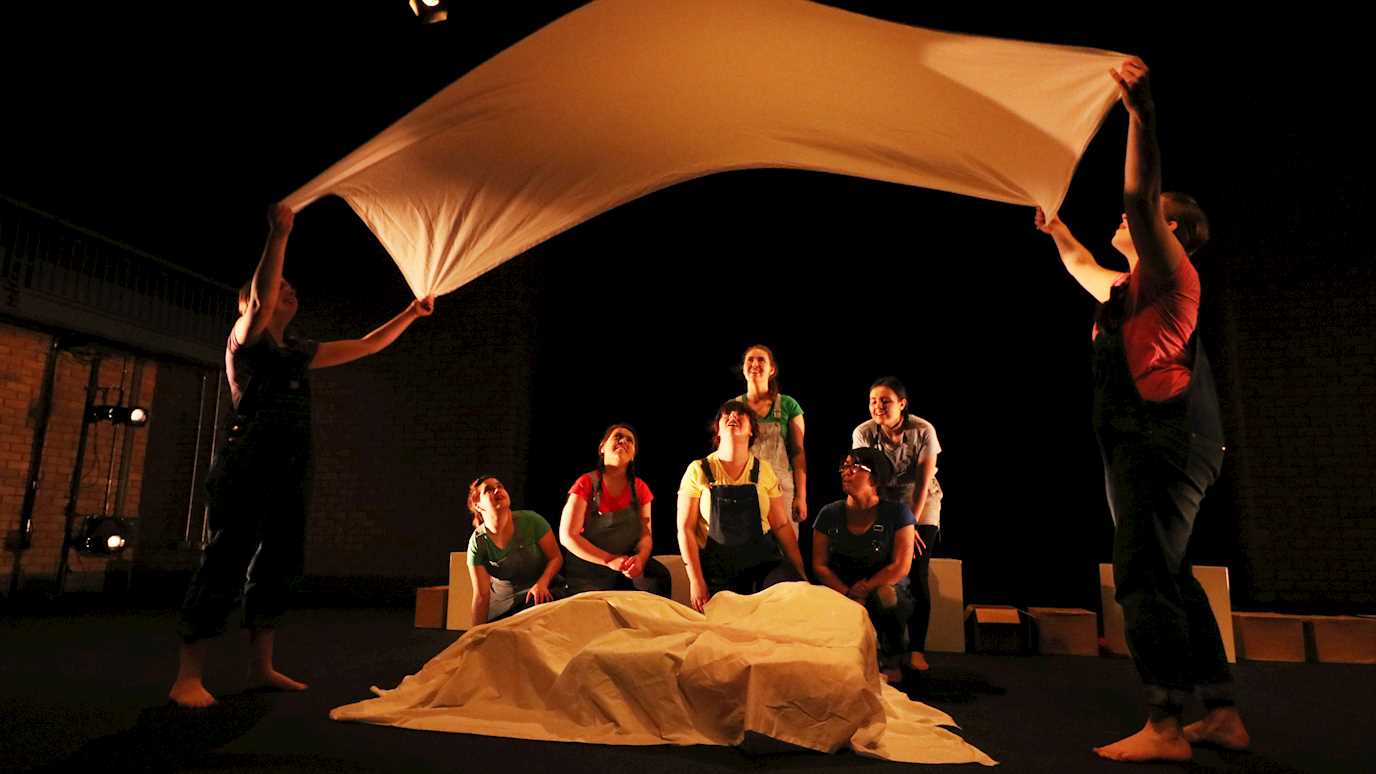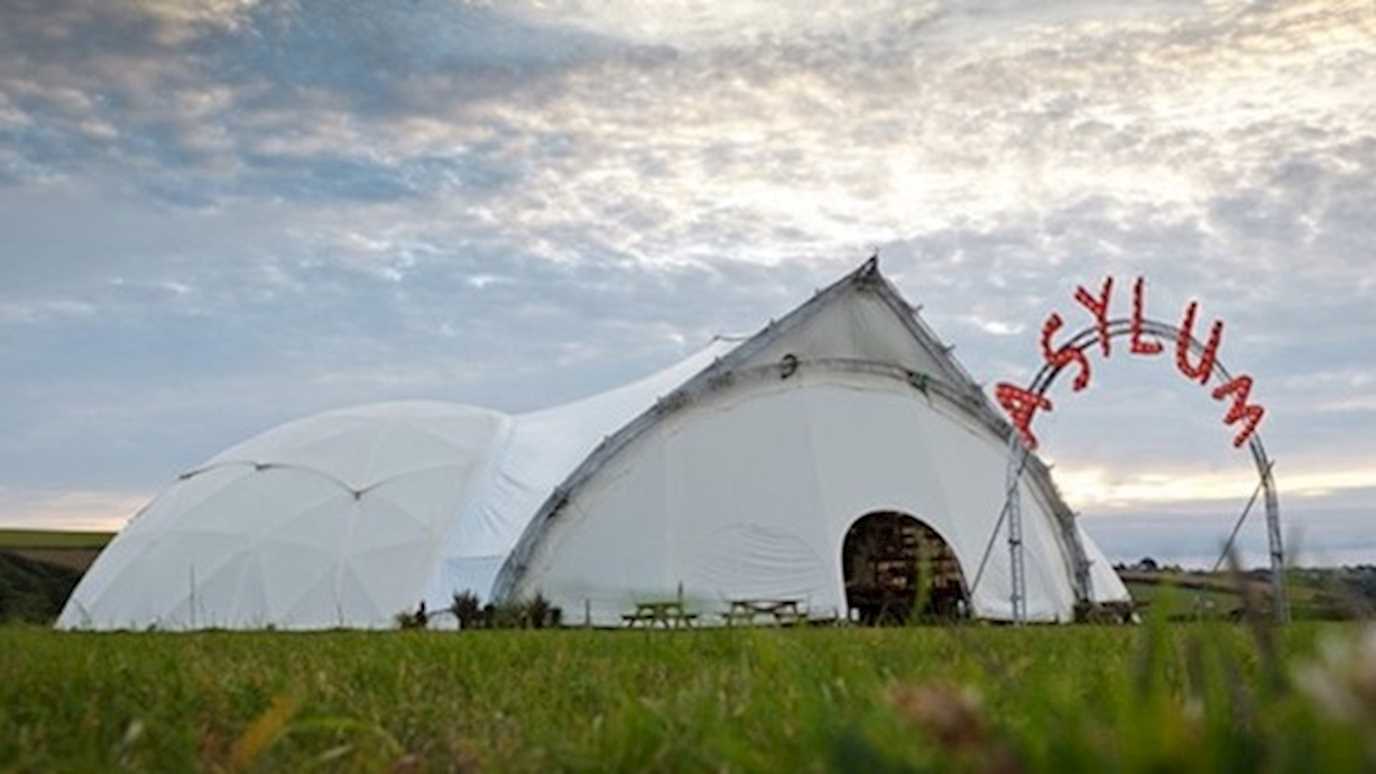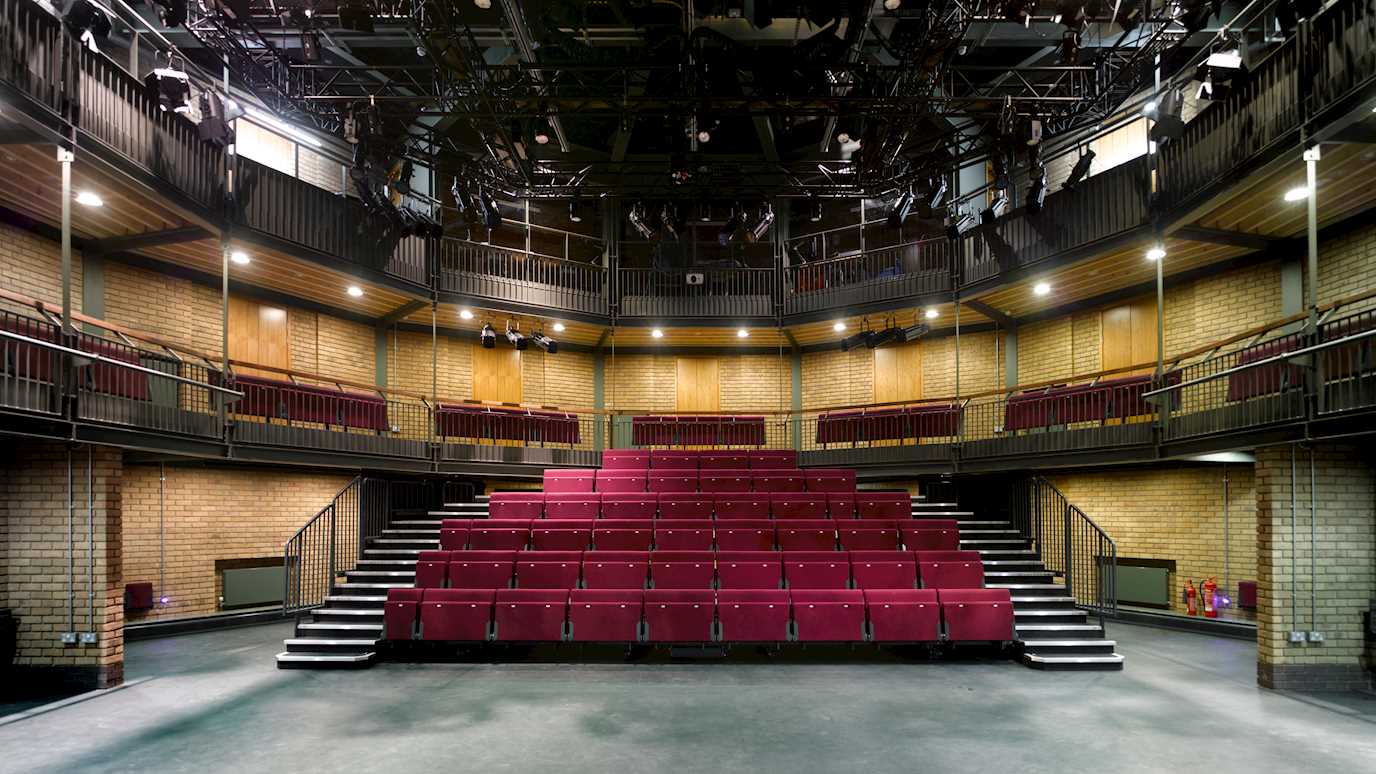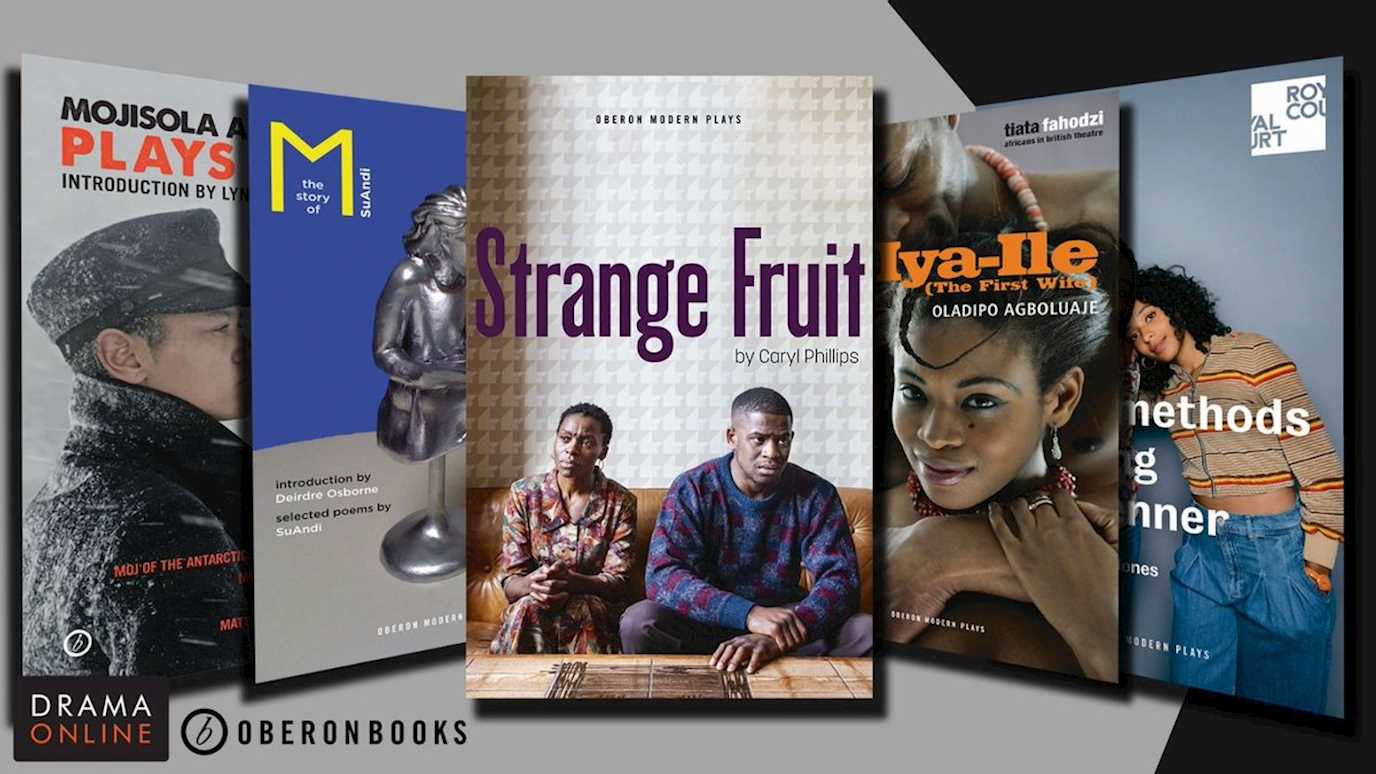This one-day symposium, “Feminist Practices: Writing Dance & Performance Histories” investigates intersectional feminist practices in the performing arts by exploring ways of writing performance histories. It takes the 1970s UK’s “New Dance” scene and the X6 space as its historical anchor and explores related, as well as other artistic collaborations and exchanges between the emerging critical performance cultures in the UK, Europe, and elsewhere from the 1970s into the 1980s, and present.
The event is focused around a keynote lecture by Dr. Sarah Gorman on intersectional theatre practice, which will be followed by presentations by early-career scholars, PhD researchers, artists, and MA students working on “feminist issues” in and across the fields of performance, dance, and art history.
The day will end with a roundtable discussion. The epilogue of Sophia Hao’s book Of Other Spaces: Where does Gesture Become Event will be circulated in advance by the speakers and pre-registered participants.
Schedule
| 09:45-10:00 | Welcome and opening comments from Jo Leask and Lisa Moravec |
| 10:00-11:00 |
Keynote by Dr. Sarah Gorman Advocacy, Amplification and Active Bystanding: Negotiating Feminist Allyship in the Performing Arts |
| 11:00-11:30 |
Tom Hastings (The Place) Greta Mendez and Independent Dance: Mas’, MAAS, Más! |
| 11:30-12:00 |
Rachel Davies (Coventry University) The Collective Politics of the X6 |
| 12:00-12:30 |
Jo Leask (Royal Central School of Drama and Speech) New Dance Magazine’s Kinaesthetic Writing: Shaping a Feminist Critical Practice |
| 12:30-13:00 |
Lisa Moravec (University of Vienna) Kunst mit Eigen-Sinn (1985): Feminist Exchanges across British & Austrian Artists |
| 13:00-14:00 | Lunch |
| 14:00-14:15 |
Tabea Marshall (Academy of Fine Arts Vienna) Sirens |
| 14:15-14:30 |
Ofri Cnaani (Goldsmiths, University of London) Active Residues: Pleasure Practice as Research Method |
| 14:30-14:45 |
Loren McKillop (London Contemporary Dance School at The Place) Resisting Authority |
| 14:45-15:00 |
Sarah Blissett (artist, researcher and dramaturg) The Thames Project: Marking Tidetime |
| 15:00-16:00 | Roundtable Discussion and feedback |
The event is kindly supported by the University of London Research Expenses Fund (Royal Holloway)
Biographies and Abstracts
Dr. Tom Hastings is Lecturer in Dance at The Place, London, and Visiting Lecturer in Dance at University of Roehampton (2019-21). He completed his PhD, on the American choreographer Yvonne Rainer, at University of Leeds in 2018. Tom has recent articles in Performance Research, Platform: Journal of Theatre and Performing Arts, and Sculpture Journal, and writes criticism for publications including Art Monthly, Artforum, Frieze, Burlington Contemporary, Studio International, Ma Bibliothèque, and Texte zur Kunst. Tom is co-editing a volume titled Feminist Genealogies of the Body and is at work on a book to do with gesture politics.
Greta Mendez and Independent Dance: Mas’, MAAS, Más!
Thinking the vexed question of visibility in independent dance, this presentation tracks the work of Trinidadian dancer, choreographer, and carnivalist Greta Mendez through the 1970s and 1980s. Mendez studied at London School of Contemporary Dance before founding MAAS Movers (1977-79) and Nin Dance Company (1980-82) with others in London. The former group took its name from the Minority Arts Advisory Service, an organisation started by Naseem Khan after the publication of her Arts Council report, The Arts Britain Ignores: The Arts of Ethnic Minorities in Britain (1976). As Emilyn Claid observed in 2006, dancers of the global majority like Mendez were forging pathways through a structurally racist dance world when that world was being challenged by white avant-gardes, or, as political theorist Nancy Hartsock put it, ‘Why is it that just when marginalized peoples like blacks, the colonized and women have begun to have and demand a voice, they are told by the white boys that there can be no authoritative speaker or subject?’ (1987). How did Mendez interact with groups like the X6 Collective (1976-80)? What other histories can be told about independent dance? This paper locates Mendez’s work as feminist practice in three sections. Drawing on original archival research and interview material, I first investigate Mendez’s formation through competition dance and mas’ (i.e., masquerade) in Trinidad and Notting Hill Carnival, before cross-reading selected works of Mendez (with MAAS and Nin) with other choreographers, including Rosemary Butcher, with whom she shared rehearsal space. Finally, I centre Mendez’s advocacy for the arts as decolonial call (Más!) to speculate about the politics of form in the emergent field of independent dance. As coda, I refer to a recent conversation between Mendez and dance artist Zinzi Minott to invite reflection on then and now.
Rachel Davies (Coventry University) is a curator and PhD researcher living in London. Her research is concerned with British experimental dance and performance art of the 1970s and ‘80s with a focus on feminist discourses. Her current research provides a sociocultural analysis of the formation and early history of Chisenhale Dance Space within the context of the New Dance movement (1977-88). Rachael was a guest curator of Coventry Biennial 2021 where she presented an archival exhibition on the work of Cycles Dance Company (1972-1984) at Rugby Art Gallery and Museum. She also curated the first exhibition on the work of the X6 Collective (1974-1980) at Cell Project Space, London, in 2020. Recent published articles include In Conversation with Rosemary Lee, 2022, Animated Magazine. She is a lecturer at Coventry University and assistant editor of Choreographic Practice Journal.
The Collective Politics of the X6
Collectivity and collaboration epitomized the zeitgeist of London’s independent art scene in the 1970s. This manifested as a surge of counter-cultural collaborative artistic activity from collectives and co-operatives, such as London Musicians Collective, The Black Theatre co-op, The Women's Workshop of the Artists' Union and the Film-makers co-op, to a network of magazines and journals such as Spare Rib, Race Today, Gay News and The Squatter’s Handbook. For many artist collectives the adopted model of collectivity and collaboration was underpinned by the politics of the Women’s Liberation Movement. This is particularly true of the X6 Collective (1976-1980). It is from this departure that my presentation will reflect on collaboration as a feminist practice within the context of the British New Dance movement (1977-1988), with a focus on the X6 Collective. This exploration will touch on various aspects of X6’s collective work from teaching and practice to organisation. In doing so, I will consider how X6’s collective working method attempted to challenge traditional, patriarchal values and conventions associated with dance.
Josephine Leask is a dance critic, editor, lecturer and part-time PhD researcher at Central School of Speech and Drama. Her PhD research explores the contribution of New Dance Magazine (1977-1988) to the creation of alternative and feminist intersectional dance writing practices. She has written about dance for a range of mainstream press and dance publications, including a chapter on Charlotte Vincent in Jo Butterworth and Lorna Sanders (Eds.) Fifty Contemporary Choreographers (2021). She currently writes for DanceTabs and edits Resolution Review which profiles emerging writers writing alongside critics. She lectures on the BA dance degree programme at London Studio Centre and on the MA in Performance writing at Rambert. She was a co-editor for Platform journal (“Balancing Acts”, 2021) and sits on the editorial board.
New Dance Magazine’s Kinaesthetic Writing: Shaping a Feminist Critical Practice
As new dance practitioners wrote from their understanding of somatic dance techniques and entanglements with feminist criticism, they shaped modes of writing and critique across the magazine that formed a lineage with wider feminist print cultures. What I define as kinaesthetic writing, in the context of NDM is a method of embodied writing, framed by affect and informed by somatic thinking which translated felt experiences of dancing and training. Mobilized through styles of personal testimony, and other feminist writing modes, kinaesthetic writing captured the moving, sensing, feminist experiences of dance, shaping a critical practice for NDM.
Dr. Lisa Moravec is a writer, critic, and body practitioner, working at the intersection of performance and visual art. She receives a post-doc research grant, and teaches at the University of Vienna. Her PhD focused on ethical and aesthetic questions in regards to societal dressage and bodily animality in contemporary performance with/out animal actors from the late 1960s. She co-edited the issue “Humanism after the Human” of Photography & Culture and Platform’s “Balancing Acts”. She taught at Kingston School of Art and Royal Holloway. Her writing has, to name a few, been published in Dance Chronicle, Contemporary Theatre Review, Burlington Contemporary, Texte zur Kunst, and in the art magazines Texte zur Kunst, Burlington Contemporary, and springerin.
Kunst mit Eigen-Sinn (1985): Feminist Exchanges across British & Austrian Artists
This talk reconceptualises women’s bodily animality, in a non-binary way through a contemporary feminist-materialist approach in the post-political climate after the second wave feminist events in the 1970s, and before the postmodern warning of post-feminism started to emerge in the 1990s. It focuses on a selection of works of (white) Austrian (Ingeborg Strobl, VALI EXPORT, Birgit Jürgenssen), and British women artists (Anne Bean, Rose Finn-Kelcey, Rose English) who were invited to participate in VALIE EXPORT and Silvia Eiblmayr’s exhibition Kunst mit Eigen-Sinn in Vienna (1985). I contextualise Austria’s very first, large international all-women museum survey as a model to examine international feminist exchanges across the UK and Austria in the 1980s, and argue that as their works make use of metaphors of animality and animal figures, it critically addresses women’s “societal dressage” within the patriarchal, colonial structures of society.
Tabea Marshall works and lives between Vienna and Berlin. She is an artist, researcher, curator and writer. From the University of Fine Arts Berlin, she graduated in the class of Monica Bonvicini and did a Master in Critical Studies at the Academy of Arts in Vienna. Moving in feminist theories, she deals with spaces, bodies and voices that occupy them.
Sirens
Beginning with her own artistic practice, Tabea Marschall deals with the mythologies of the Sirens by active re-reading and re-writing, moving into critical, feminist discourses. The Sirens reject a prescribed social and cultural body, freeing themselves from it to come together in a fluid polyphony. Resistively uniting within a rupture, they inhabit temporary artificial sound bodies and enter into dialogues with others.
Ofri Cnaani is an artist, currently living in London. She works in time-based media, performances, and installations. She is an associate lecturer at the Visual Cultures Department, Goldsmiths, University of London. Cnaani’s work has appeared at Tate Britain, UK; Venice Architecture Biennial; Metropolitan Museum of Art, NYC; Inhotim Institute, Brazil; Israel Museum; Amos Rex Museum, Helsink; Kiasma Museum, Helsinki; PS1/MoMA, NYC; BMW Guggenheim Lab, NYC; The Fisher Museum of Art, L.A.; Twister, Network of Lombardy Contemporary Art Museums, Italy; Herzliya Museum of Art, Israel; Moscow Biennial; The Kitchen, NYC; Bronx Museum of the Arts, NYC; Kunsthalle Wien, Vienna; Arnolfini Foundation Museum, Bristol; Tel Aviv Museum; Prague Triennial, among others.
Active Residues: Pleasure Practice as Research Method
In September 2018, a fatal fire brought to an end two centuries’ worth of treasures in Brazil’s national museum. It seems almost unimaginable that so many valuable objects were simply wiped off the face of the earth without leaving any trace. Can the museum’s residues of body, data and matter be approached not in an object form but as an active form? The talk will discuss the end of collection through Sara Ahmed notion of ‘Stickiness’ and Elizabeth Freeman notion of ‘temporal drag’ to show how the removal of the object leaves behind the multiplicity of its conditions and how the residues can become an active site of engagement. The discussion will focus on a collaboration between the artist and dance-maker luciana achugar, who’s embodied ‘pleasure practice’ was taken as a mode of doing research in order to engage with the ecology of leftovers that remain unclaimed by the museum.
Loren McKillop is a Queer Scottish Artist. They previously studied at Trinity Laban and are now doing the postgrad in Expanded Dance Practice at LCDS. They are interested in activism (in its many forms), queerness, community and resistance. Loren is building a practice which considers accessibility, labour and care.
Resisting Authority
I work with my own flippant and stupid provocation that theatre is a lie. In relation to this, I am building an erroneous academic alibi as an act of resistance, as a way to assimilate, survive, participate, and pass. I'm currently preoccupied with Authority and Masculinity, specifically reflecting on the trope of choreographer as philosopher. With the work of unnamed choreographers in mind I pose myself the question: How would this work be transformed through a feminist methodology so it is a lie which can tell the truth?
Dr. Sarah Blissett is an artist, researcher and dramaturg. She holds a PhD in Performance Studies from the University of Roehampton and her interdisciplinary practice explores ways of working with watery ecologies in performance. She is interested in how interactions between language, bodies and sites can remember and reimagine entangled human-nonhuman narratives in relation to the current climate crisis. She is guest editor for an upcoming issue of CSPA Quarterly on ‘Intertidal Encounters’. Recent projects include: How Nature Builds, Modern Art Oxford (2019, 2022), Kelp Curing, LIAF Kelp Congress (2019), Vestiges, Beaumont Gallery (2019), Water Bodies, Whitstable Biennale (2016).
The Thames Project: Marking Tidetime
Marking Tidetime is an artistic research project that explores a hydrofeminist lens on material encounters with an area of Thames foreshore in Greenwich. The project draws on theories of hydrofeminism (Neimanis 2012) and posthuman feminist thinking (Braidotti 2021, Neimanis 2017, Haraway 2016, Alaimo 2016) to explore site-responsive performance encounters with the tide, weather and different foreshore objects. Weekly intertidal encounters are re-marked through site-responsive movement, voice notes, photos and text as modes of thinking about and responding to the river’s changing ecologies, particularly in relation to sea level rise. Current questions include- How and what does the Thames highlight in terms of hydrofeminist thinking about entangled forms of watery embodiment? What are some of the invisible stories and histories of the river Thames and how are they being held by the foreshore? What does the foreshore reveal about ways of dwelling differently together in a time of climate crisis?
























